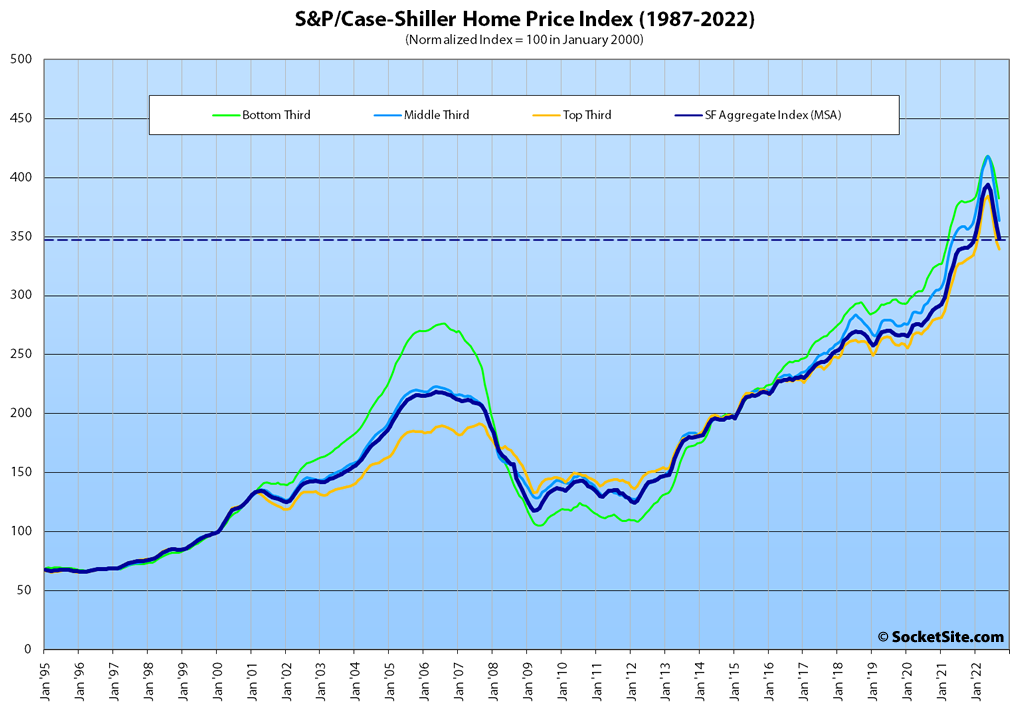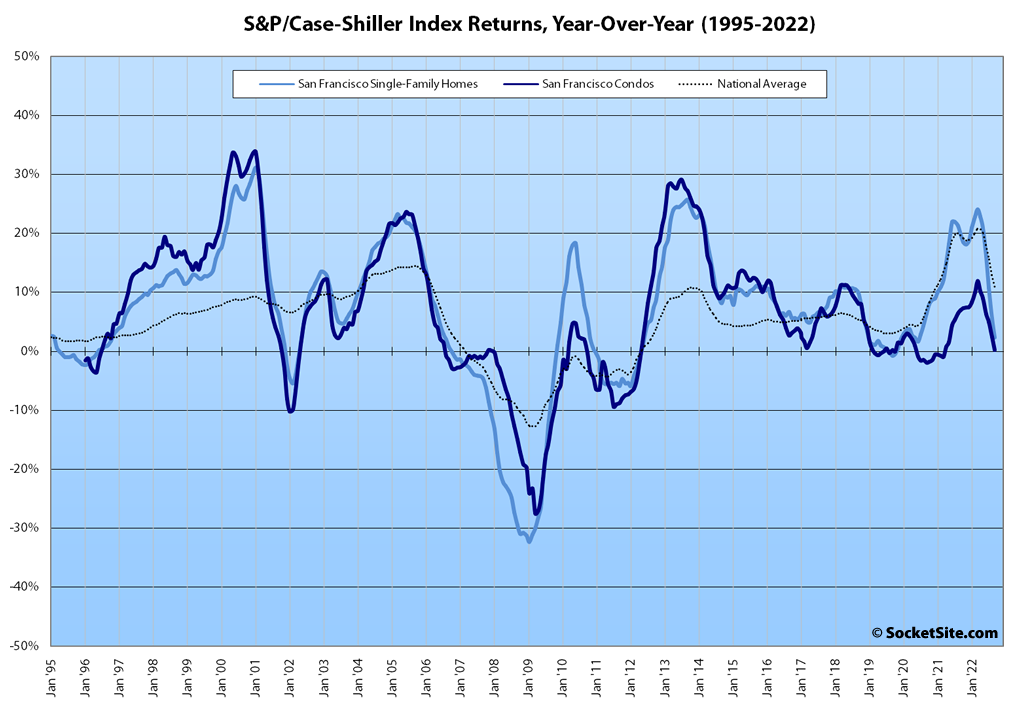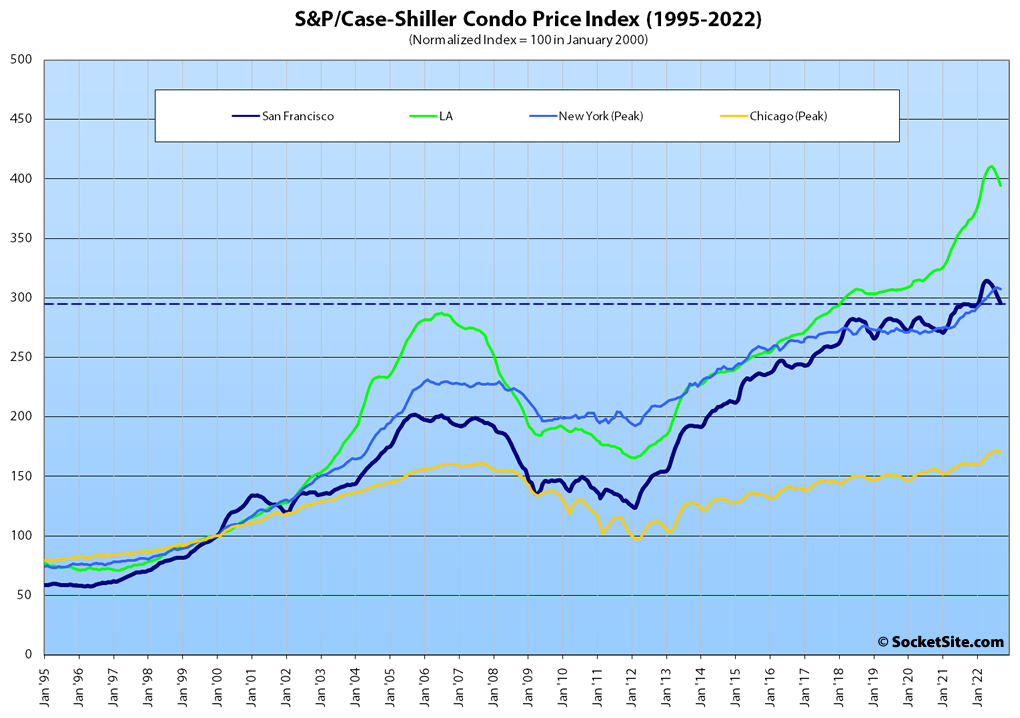Having dropped 4.3 percent in August, the S&P CoreLogic Case-Shiller Index for single-family home values within the San Francisco Metropolitan Area – which includes the East Bay, North Bay and Peninsula – fell another 2.9 percent in September.
While the San Francisco index is still 2.3 percent higher than at the same time last year, it’s down 11.6 percent since May, has rapidly decelerated from a 24.1 percent year-over-year increase in March, and should reveal a year-over-year decline in values within a month or two, none of which should catch any plugged-in readers by surprise.
At a more granular level, the index for the least expensive third of the Bay Area market dropped 3.4 percent in September for a year-over-year gain of 1.0 percent; the index for the middle tier of the market dropped 4.2 percent for a year-over-year gain of 1.5 percent; and the index for the top third of the market dropped 1.9 percent in September and is down 11.7 percent since May, for a year-over-year gain of 3.0 percent, which should soon turn negative, and is down from a year-over-year gain of 25.1 percent in March.
The index for Bay Area condo values, which remains a leading indicator for the market as a whole, dropped another 2.1 percent in September for a year-over-year gain of just 0.3 percent, which was down from a localized peak of 12.0 percent in March and versus year-over-year gains of 9.2 percent, 6.3 percent and 7.2 percent in Los Angeles, Chicago and New York respectively.
Nationally, Miami led the way with respect to exuberantly indexed home price gains, up 24.6 percent on a year-over-year basis, followed by Tampa (up 23.8 percent) and Charlotte (up 17.8 percent) but with an acceleration in the “deceleration in U.S. housing prices,” a month-over-month drop of 1.0 percent overall, and the index for San Francisco and Seattle having dropped more than any other major metropolitan areas.
Our standard SocketSite S&P/Case-Shiller footnote: The S&P/Case-Shiller home price indices include San Francisco, San Mateo, Marin, Contra Costa and Alameda in the “San Francisco” index (i.e., greater MSA) and are imperfect in factoring out changes in property values due to improvements versus appreciation (although they try their best).


